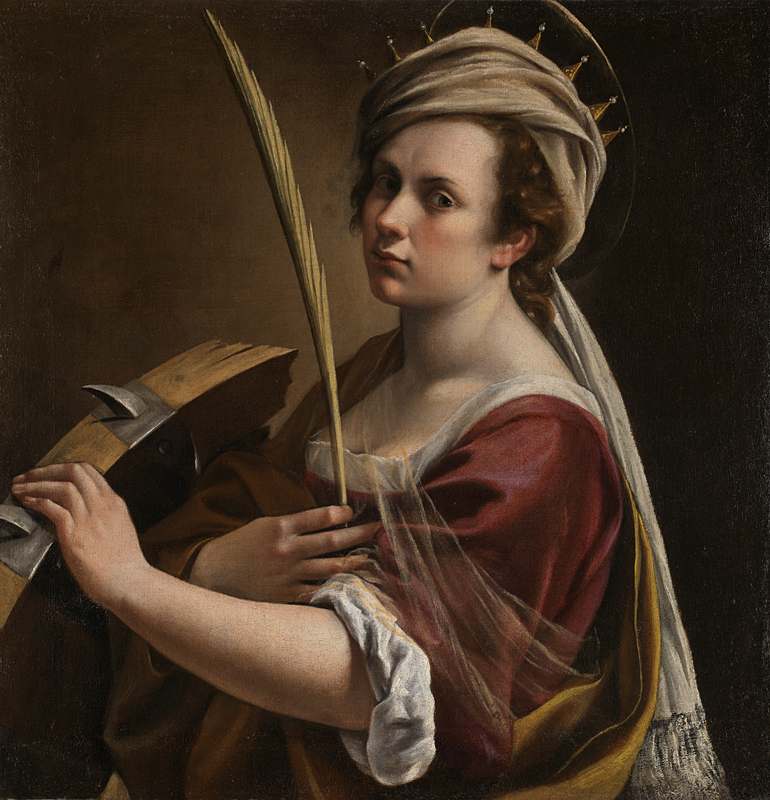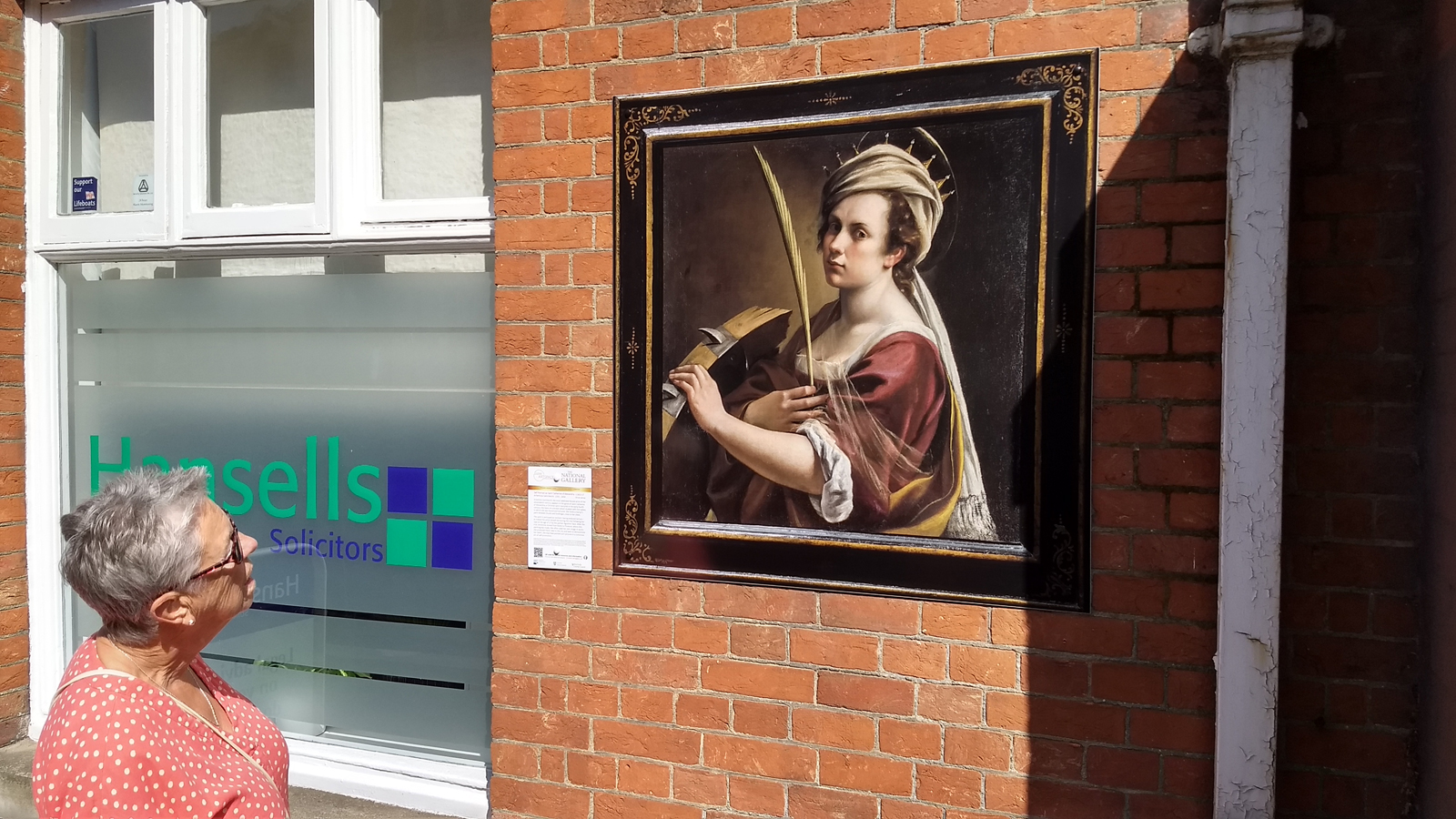Gentileschi’s self portrait can be found outside Hansells, 10 Church Street, Cromer, NR27 9ER

Self Portrait as Saint Catherine of Alexandria, about 1615–17
Oil on canvas, 71.4 × 69 cm
Bought with the support of the American Friends of the National Gallery, the National Gallery Trust, Art Fund (through the legacy of Sir Denis Mahon), Lord and Lady Sassoon, Lady Getty, Hannah Rothschild CBE, Mrs Mollie W. Vickers, the Hon. Mrs Ashley Dawson-Damer, The Society of Dilettanti Charitable Trust Fund, Mr Andrew Green QC and Ms Hirschl, Mr Matthew Santos and Mrs Mary Kuusisto, Mr Peter Scott CBE QC and Dr Richard Ballantine, the Diane Apostolos-Cappadona Trust, Mr Stephen Allcock, Mr James and Lady Emma Barnard, Miss Maxine White and Mr James Mortimer, Michael and Felicia Crystal, The W T J Griffin Charitable Settlement and other donors including those who wish to remain anonymous, 2018
© The National Gallery, London
Self Portrait as Saint Catherine of Alexandria, 1615-17
Artemisia Gentileschi
Oil on canvas 71.4 × 69 cm
Artemisia Gentileschi, the most celebrated female artist of the seventeenth century, appears in the guise of Saint Catherine of Alexandria, a Christian saint martyred in the early fourth century. She leans on a broken wheel studded with iron spikes, to which she was bound and tortured, and which became her standard attribute in art. Her right hand, delicately holding a martyr’s palm between thumb and forefinger, is brought to her chest.
Read more at NationalGallery.org.uk
Artemisia Gentileschi
Artemisia is the most celebrated female painter of the 17th century. Artemisia was born in Rome, the eldest of five children and only daughter of Orazio Gentileschi, under whom she trained. Artemisia’s earliest signed and dated painting, ‘Susanna and the Elders’ (Schloss Weißenstein collection, Pommersfelden, Germany), is from 1610. A year later Artemisia was raped by the painter Agostino Tassi, an acquaintance and collaborator of her father’s. An infamous trial, meticulously recorded in documents that survive, ensued in 1612. Tassi was found guilty and banished from Rome, though his punishment was never enforced.
Read more at NationalGallery.org.uk


